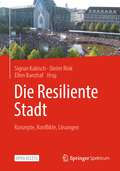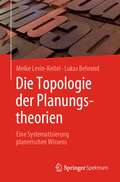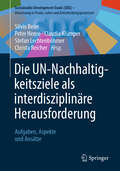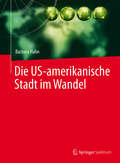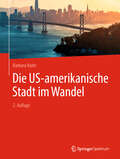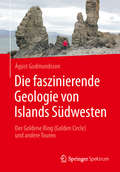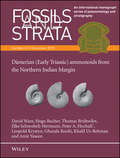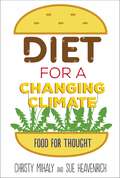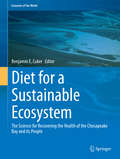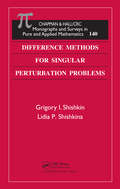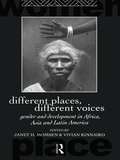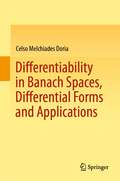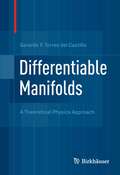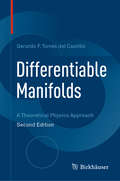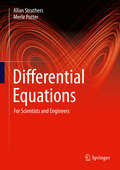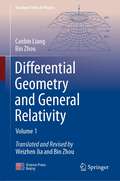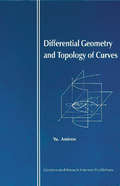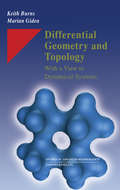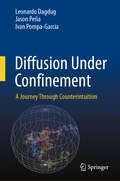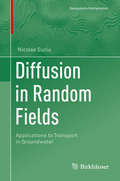- Table View
- List View
Die Resiliente Stadt: Konzepte, Konflikte, Lösungen
by Sigrun Kabisch Dieter Rink Ellen BanzhafResilienz ist das Konzept der Stunde. Die Coronakrise, die Flutkatastrophe im Ahrtal und die Energieknappheit haben Resilienz an die Spitze der politischen Agenda gesetzt. Auch für die Stadtentwicklung gilt Resilienz als Ziel. Doch was steckt hinter diesem relativ neuen Begriff? In diesem Open-Access Band erfahren die Leser*innen wie Städte auf Krisen und Katastrophen besser vorbereitet werden müssen, um diese gut zu überstehen und gestärkt aus ihnen hervorzugehen. Die Beiträge zeigen konkrete Beispiele, wie Städte resilienter gestaltet werden können.Welche Voraussetzungen müssen dafür geschaffen werden und welche Hindernisse gibt es? Für das Ziel urbaner Resilienz bedarf es rascher, tiefgreifender und systemischer Wandlungen auf allen Ebenen, von der Gesamtstadt bis zum Quartier oder der Nachbarschaft. Der Weg dahin und die entsprechenden Instrumente sind vielfach bekannt; dennoch wird bislang nicht mit der notwendigen Entschlossenheit vorgegangen. Dieser Band enthält empirisch belegte Beispiele aus der aktuellen Stadtforschung, zeigt Konflikte auf und diskutiert Lösungen. Die Beiträge analysieren, wie bestehende Einsichten zum Handeln führen und vorhandenes Wissen klug eingesetzt werden kann. Sie verweisen auch darauf, warum existierende Lösungsvorschläge nicht zum Einsatz kommen. Anhand der Betrachtung unterschiedlicher kommunaler Handlungsfelder wie blau-grüner Infrastrukturen, Energie- und Wärmewende, Umweltstressoren, Wohnen und Gesundheit wird ein tieferes Verständnis für die resiliente Stadt entwickelt. Das Werk richtet sich an Stadt- und Regionalplaner*innen, Geograph*innen, Stadtforscher*innen und Umweltwissenschaftler*innen sowie an Verantwortliche in Kommunalpolitik und -verwaltung.
Die Topologie der Planungstheorien: Eine Systematisierung planerischen Wissens
by Meike Levin-Keitel Lukas BehrendDas Buch diskutiert und organisiert Planungstheorien auf eine neue Weise. Aufbauend auf einer wissenschaftstheoretischen Fundierung werden dabei sowohl die Planungspraxis als auch die Planungswissenschaften eingeordnet und deren inhärente Bedeutung im Sinne der Wissensgenerierung neu justiert. Herzstück des Buches ist eine wissensorientierte Systematisierung planerischen Wissens in Form von Planungstheorien, die Topologie der Planungstheorien. Die Zielgruppe dieses Werkes sind sowohl akademische als auch praxisnahe Anwender:innen aus diversen Fachbereichen mit Raumwirkung, wie z. B. der Raumplanung, Stadtplanung, Regionalplanung, Landschaftsplanung, Geographie, Urban Studies, Architektur, Landschaftsarchitektur etc.
Die UN-Nachhaltigkeitsziele als interdisziplinäre Herausforderung: Aufgaben, Aspekte und Ansätze (Sustainable Development Goals (SDG) – Umsetzung in Praxis, Lehre und Entscheidungsprozessen)
by Christa Reicher Silvio Beier Peter Hense Claudia Klümper Stefan LechtenböhmerDieses Buch gibt Einblicke in die Zielsetzungen und zu den Herausforderungen der Nachaltigkeistzielde der UN. Ausgehend von den Blickwinkeln einzelner Fachdisziplinen wird allgemein verständlich die Zelsetzung mit einem Blick auf europäische Verhältnisse erläutert und mit den Anforderungen an andere Fachdisziplinen verknüpft, die notwendig sind, damit ein Erreichen realistisch und zielführend vorangetrieben werden kann.
Die US-amerikanische Stadt im Wandel
by Barbara HahnDie US-amerikanische Stadt ist einem steten Wandel unterworfen. Im Osten und Mittleren Westen waren die meisten Städte als Handelsstädte an Wasserwegen gegründet worden. Zu Zeiten der Industrialisierung erlebten sie einen Aufschwung, und ihr Bevölkerungsmaximum erreichten sie Mitte des 20. Jahrhunderts, als aufgrund von Suburbanisierung und Deindustrialisierung ein Bedeutungsrückgang einsetzte. Überall waren Spuren des Verfalls sichtbar, und die Prognosen für die Zukunft waren denkbar schlecht. Dieser Trend scheint gebrochen: Es geht wieder aufwärts mit der US-amerikanischen Stadt. Einem Teil der früheren Industriestädte ist ein Strukturwandel gelungen. Allerdings profitieren nicht alle Städte von dieser positiven Entwicklung, und viele schrumpfen weiter in erschreckendem Ausmaß. Gleichzeitig haben sich die Städte im Süden und Westen des Landes zu neuen Wachstumszentren entwickelt. Unabhängig von Lage und Entwicklungsstand sind in allen Städten ähnliche Prozesse wie Neoliberalisierung, Deregulierung, Privatisierung und Gentrifizierung zu beobachten.In diesem Lehrbuch werden die Charakteristika der US-amerikanischen Stadt und deren Wandel anhand aktueller Beispiele herausgearbeitet. Die Autorin: Barbara Hahn hat an der Universität Würzburg den Lehrstuhl für Wirtschaftsgeographie und hat den Wandel der US-amerikanischen Stadt seit Mitte der 1980er Jahre im Rahmen vieler Reisen und Forschungsprojekte beobachtet.
Die US-amerikanische Stadt im Wandel
by Barbara HahnDie US-amerikanische Stadt ist einem steten Wandel unterworfen. Im Osten und Mittleren Westen sind die meisten Städte als Handelsorte an Wasserwegen gegründet worden. Zu Zeiten der Industrialisierung erlebten sie einen Aufschwung, und ihr Bevölkerungsmaximum erreichten sie Mitte des 20. Jahrhunderts, ehe aufgrund von Suburbanisierung und Deindustrialisierung ein Bedeutungsrückgang einsetzte. Überall zeigten sich Spuren des Verfalls, und die Prognosen für die Zukunft waren denkbar schlecht. Wie Barbara Hahn in ihrem Buch zeigt, scheint dieser Trend mittlerweile gebrochen: Es geht wieder aufwärts mit der US-amerikanischen Stadt. Einigen der früheren Industriestädte ist ein Strukturwandel gelungen. Im Süden und Westen des Landes haben sich die Städte zu neuen Wachstumszentren entwickelt. Allerdings profitieren nicht alle Städte von dieser positiven Entwicklung, und viele schrumpfen weiter in erschreckendem Ausmaß. Wie die Autorin betont, sind unabhängig von Lage und Entwicklungsstand in allen Städten ähnliche Prozesse wie Neoliberalisierung, Deregulierung, Privatisierung und Gentrifizierung zu beobachten. Aufgrund der Vielzahl an didaktisch aufgearbeiteten Grafiken eignet sich das Buch für Studierende, Wissenschaftler und interessierte Laien als Lektüre. Die Charakteristika der US-amerikanischen Stadt, die anhand aktueller Beispiele herausgearbeitet sind, veranschaulichen ebenso wie die illustrativen Fotos auch dem interessierten Leser den Wandel der US-amerikanischen Stadt.
Die Zeit: in der Speziellen Relativitätstheorie (essentials)
by Heinz J. RotheEinsteins neue Deutung der Zeit ist der Kern seiner Speziellen Relativitätstheorie (SRT). In der SRT spielt die Zeit nicht mehr die Rolle eines reinen Parameters unabhängig vom Raum; dies führt zu Konsequenzen, die für uns sehr befremdlich sind. Alle ungewohnten Aussagen der SRT sind auf den von Einstein geprägten neuen Zeitbegriff zurückzuführen. Das Hauptanliegen dieses Buches ist es, dem Leser ein konzeptuell schwieriges Thema so weit wie möglich transparent zu vermitteln, wobei auf eine Diskussion der subtilen Aspekte besonderer Wert gelegt wird.
Die Zukunft der Wirtschaftsberichterstattung: Ökosystemleistungen und Biodiversität in staatlichen und unternehmerischen Bilanzierungen (essentials)
by Bernd Hansjürgens Karsten Grunewald Roland Zieschank Johannes Förster Tobias M. WildnerDieses Open Access-Buch zeigt, wie der Wert von Ökosystemleistungen und biologischer Vielfalt im Sinne einer ehrlichen Rechnung besser in nationale Berichte und Unternehmensbilanzen integriert werden kann. Wirtschaftlicher und sozialer Wohlstand hängen entscheidend von einer intakten, artenreichen Natur ab. Der wahre Wert des Naturvermögens und funktionierender Ökosysteme wird häufig unterschätzt – sowohl in seiner Bedeutung für den Einzelnen, wie auch in volkswirtschaftlichen Berechnungen und Unternehmensbilanzen.
Die eindimensionale Wellengleichung: Mathematische Aspekte im Überblick (essentials)
by Walter StramppDie Wellengleichung besitzt vielseitige Anwendungen und reichhaltige Facetten. Diese müssen jedoch oft mühsam zusammengetragen werden. Mathematische Aspekte der Wellengleichung werden deshalb in diesem essential in einer Gesamtschau geschildert. Sämtliche mit der Wellengleichung verbundenen Anfangs- und Randwertprobleme werden einbezogen. Klassische Lösungsmethoden mitsamt ihren Querverbindungen werden vorgestellt. Die Methode der charakteristischen Parallelogramme wird durch den Einsatz der Diffenzengleichungen erweitert.
Die faszinierende Geologie von Islands Südwesten
by Ágúst Gudmundsson Sonja PhilippSteigen Sie mit diesem einzigartigen Buch in die faszinierende Geologie von Islands Südwesten ein. Entdecken Sie entlang von fünf bekannten Touren die geologische Vielfalt dieser Insel: (1) Der berühmte "Goldene Ring" (Golden Circle), (2) Täler und Berge des Fjordes Hvalfjördur, (3) die einzigartige Landschaft und Geothermalfelder des Hengill-Vulkans, (4) Explosionskrater, Vulkanspalten und Lavafelder der Reykjanes-Halbinsel und (5) Vulkane (Hekla, Eyjafjallajökull, Katla), Wasserfälle, Sanderflächen und Basaltsäulen Südislands. Der Goldene Ring ermöglicht, die Kräfte unseres Planeten auf einzigartige Weise zu beobachten und zu verstehen. Diese Kräfte bewegen die tektonischen Platten, reißen die Kruste auf und führen zu Erdbeben, Vulkanausbrüchen, Flussbetten und Wasserfällen sowie Wärmequellen für heiße Quellen und Geysire. Der Goldene Ring umfasst Thingvellir, bekannt für Rifting und Erdbebenbrüche, die heißen Quellen von Geysir, den Wasserfall Gullfoss und den Vulkankrater Kerid. Dieses Buch wendet sich in erster Linie an interessierte Laien ohne geowissenschaftliche Vorkenntnisse. Aus diesem Grund wurde leicht verständliche Sprache gewählt, die mit wenigen geologischen Fachbegriffen auskommt. Ein ausführliches Glossar liefert die Erklärung zu den einzelnen Begriffen. Auch für Geowissenschaftler ist dieses Buch wegen seiner über 240 Abbildungen – überwiegend Fotografien – von Interesse.
Die wilde Stadt: Stadtwildnis als Ideal, Leistungsträger und Konzept für die Gestaltung von Stadtnatur
by Jürgen BreusteEin städtisches Leben ohne Wildnis ist denkbar, aber nicht erstrebenswert!Stadtwildnis wagen! Das bedeutet ungeplanter Natur im städtischen Leben einen Platz bieten.Die meisten Stadtbewohner wissen heute gar nicht mehr, was Wildnis eigentlich ist, sind aber gleichzeitig von Wildtieren und –pflanzen fasziniert. Wir haben ein tief verwurzeltes Bedürfnis, etwas über das uns umgebende Leben, die Arten und Artenvielfalt zu erfahren, um zu verstehen, wie wir dies auch in die Städte holen können. Trotzdem haben wir keine konkrete Vorstellung wie wilde Stadtnatur integriert in eine grüne Infrastruktur aussehen kann.Dieses Lehrbuch zur wilden Stadt untersucht Stadtwildnis, ihre Erscheinungsformen, ihre Wahrnehmung durch Stadtbewohner und Naturschützer und begreift Wildnis als Chance und Herausforderung. Dabei stellt es Biodiversität und Naturerlebnis in den Mittelpunkt. Es beantwortet wichtige aktuelle Fragen zu den ökologischen und soziokulturellen Grundlagen von Stadtwildnis, zu ihrer Struktur, zum ökologischen Leistungsvermögen, zum Verhalten gegenüber Wildnis und zum Schutz von wilder Natur in der Stadt. Das Buch erklärt, was Stadtwildnis ist, warum sie Lebensraum von wilden Pflanzen und Tieren ist, wie die Bewohner der Stadt mit ihr zusammenleben können und warum Wildnis ein wertvoller Bestandteil einer blauen und grünen urbanen Infrastruktur sein kann.Theorien und Erkenntnisse der Stadtentwicklung und Ökologie werden mit praktischen Anwendungen in der Stadtplanung zum Thema Stadtwildnis verbunden und mit vielen Fallstudien und weltweiten Beispielen veranschaulicht. Die großen Potenziale von Stadtwildnis werden im Detail aufgezeigt. Um Stadtwildnis nicht zum Problem werden zu lassen, bedarf es eines zielgerichteten, an die besonderen Bedingungen wilder Stadtnatur angepassten Wildnis-Managements, das Naturschutz wie Naturgestaltung gleichermaßen einschließt und dabei immer den Bezug zu den Stadtbewohnern im Auge behält.Ein Lehrbuch, das besonders Studierende und Lehrende der Fächer Stadt- und Raumplanung, Ökologie, Biologie, Landschaftsarchitektur, Landschaftspflege, Geographie und Sozialwissenschaften anspricht und darüber hinaus auch fächerübergreifende Studiengänge wie Smart Cities und Naturmanagement sowie Praktiker der Stadtgestaltung und -entwicklung und des Naturschutzes bedient.
Dienerian (Fossils and Strata Monograph Series #126)
by David Ware Hugo Bucher Thomas Brühwiler Elke Scheebeli-Hermann Peter A. Hochuli Leopold Krystyn Ghazala Roohi Khalil Ur-Rehman Amir YaseenFossils and Strata is an international series of monographs and memoirs in palaeontology and biostratigraphy, owned by, and published on behalf of, The Lethaia Foundation in cooperation between the Scandinavian countries. Fossils and Strata forms part of the same structured publishing programme as the international journal Lethaia and provides a complementary outlet for more comprehensive systematic and regional monographs, including taxonomic descriptions. Fossils and Strata also offers the publication of thematic special issues comprising a series of shorter contributions.
Diet for a Changing Climate: Food for Thought
by Christy Mihaly Sue HeavenrichThe United Nations supports a compelling solution to world hunger: eat insects! Explore the vast world of unexpected foods that may help solve the global hunger crisis. Weeds, wild plants, invasive and feral species, and bugs are all food for thought. Learn about the nutritional value of various plant and animal species; visit a cricket farm; try a recipe for dandelion pancakes, kudzu salsa, or pickled purslane; and discover more about climate change, sustainability, green agriculture, indigenous foods, farm-to-table restaurants, and how to be an eco-friendly producer, consumer, and chef. Meet average folks and experts in the field who will help you stretch your culinary imagination!
Diet for a Sustainable Ecosystem: The Science for Recovering the Health of the Chesapeake Bay and its People (Estuaries of the World)
by Benjamin E. CukerThis book explores a specific ecosystem in depth, in order to weave a story built on place and history. It incorporates the theme of a journey to help reveal the environment-human-health-food system-problem. While drawing on a historical approach stretching back to the American colonial era, it also incorporates more contemporary scientific findings. By crafting its story around a specific place, the book makes it easier for readers to relate to the content, and to subsequently use what they learn to better understand the role of food systems at the global scale.
Difference Methods for Singular Perturbation Problems (Monographs and Surveys in Pure and Applied Mathematics)
by Grigory I. Shishkin Lidia P. Shishkina� Difference Methods for Singular Perturbation Problems focuses on the development of robust difference schemes for wide classes of boundary value problems. It justifies the ε-uniform convergence of these schemes and surveys the latest approaches important for further progress in numerical methods.The first part of the book e
Different Places, Different Voices: Gender and Development in Africa, Asia and Latin America (Routledge International Studies of Women and Place)
by Janet H. Momsen Vivian KinnairdDifferent Places, Different Voices challenges Western feminist and post-colonial approaches in its analysis of the changing lives of women of Asia, Africa, Latin America and Oceania. Recognising the significance of place, this is a book informed by the voices of female geographers from the developing world. Twenty case studies present regional perspectives on urban and rural development, household reproduction and production and community organisation. The theoretical and contextual approach and the emphasis on location and positionality highlight the differences created by place to suggest other ways of seeing.
Differentiability in Banach Spaces, Differential Forms and Applications
by Celso Melchiades DoriaThis book is divided into two parts, the first one to study the theory of differentiable functions between Banach spaces and the second to study the differential form formalism and to address the Stokes' Theorem and its applications. Related to the first part, there is an introduction to the content of Linear Bounded Operators in Banach Spaces with classic examples of compact and Fredholm operators, this aiming to define the derivative of Fréchet and to give examples in Variational Calculus and to extend the results to Fredholm maps. The Inverse Function Theorem is explained in full details to help the reader to understand the proof details and its motivations. The inverse function theorem and applications make up this first part. The text contains an elementary approach to Vector Fields and Flows, including the Frobenius Theorem. The Differential Forms are introduced and applied to obtain the Stokes Theorem and to define De Rham cohomology groups. As an application, the final chapter contains an introduction to the Harmonic Functions and a geometric approach to Maxwell's equations of electromagnetism.
Differentiable Manifolds
by Gerardo F. Torres del CastilloThis textbook delves into the theory behind differentiable manifolds while exploring various physics applications along the way. Included throughout the book are a collection of exercises of varying degrees of difficulty. Differentiable Manifolds is intended for graduate students and researchers interested in a theoretical physics approach to the subject. Prerequisites include multivariable calculus, linear algebra, and differential equations and a basic knowledge of analytical mechanics.
Differentiable Manifolds: A Theoretical Physics Approach
by Gerardo F. Torres del CastilloThis textbook delves into the theory behind differentiable manifolds while exploring various physics applications along the way. Included throughout the book are a collection of exercises of varying degrees of difficulty. Differentiable Manifolds is intended for graduate students and researchers interested in a theoretical physics approach to the subject. Prerequisites include multivariable calculus, linear algebra, and differential equations and a basic knowledge of analytical mechanics.
Differential Equations: For Scientists and Engineers
by Allan Struthers Merle PotterThis book is designed to serve as a textbook for a course on ordinary differential equations, which is usually a required course in most science and engineering disciplines and follows calculus courses. The book begins with linear algebra, including a number of physical applications, and goes on to discuss first-order differential equations, linear systems of differential equations, higher order differential equations, Laplace transforms, nonlinear systems of differential equations, and numerical methods used in solving differential equations. The style of presentation of the book ensures that the student with a minimum of assistance may apply the theorems and proofs presented. Liberal use of examples and homework problems aids the student in the study of the topics presented and applying them to numerous applications in the real scientific world. This textbook focuses on the actual solution of ordinary differential equations preparing the student to solve ordinary differential equations when exposed to such equations in subsequent courses in engineering or pure science programs. The book can be used as a text in a one-semester core course on differential equations, alternatively it can also be used as a partial or supplementary text in intensive courses that cover multiple topics including differential equations.
Differential Geometry and General Relativity: Volume 1 (Graduate Texts in Physics)
by Bin Zhou Canbin LiangThis book, the first in a three-volume set, explains general relativity using the mathematical tool of differential geometry. The book consists of ten chapters, the first five of which introduce differential geometry, which is widely applicable even outside the field of relativity. Chapter 6 analyzes special relativity using geometric language. In turn, the last four chapters introduce readers to the fundamentals of general relativity. Intended for beginners, this volume includes numerous exercises and worked-out example in each chapter to facilitate the learning experience. Chiefly written for graduate-level courses, the book’s content will also benefit upper-level undergraduate students, and can be used as a reference guide for practicing theoretical physicists.
Differential Geometry and Mathematical Physics
by Matthias Schmidt Gerd RudolphThe book is devoted to the study of the geometrical and topological structure of gauge theories. It consists of the following three building blocks: - Geometry and topology of fibre bundles, - Clifford algebras, spin structures and Dirac operators, - Gauge theory. Written in the style of a mathematical textbook, it combines a comprehensive presentation of the mathematical foundations with a discussion of a variety of advanced topics in gauge theory. The first building block includes a number of specific topics, like invariant connections, universal connections, H-structures and the Postnikov approximation of classifying spaces. Given the great importance of Dirac operators in gauge theory, a complete proof of the Atiyah-Singer Index Theorem is presented. The gauge theory part contains the study of Yang-Mills equations (including the theory of instantons and the classical stability analysis), the discussion of various models with matter fields (including magnetic monopoles, the Seiberg-Witten model and dimensional reduction) and the investigation of the structure of the gauge orbit space. The final chapter is devoted to elements of quantum gauge theory including the discussion of the Gribov problem, anomalies and the implementation of the non-generic gauge orbit strata in the framework of Hamiltonian lattice gauge theory. The book is addressed both to physicists and mathematicians. It is intended to be accessible to students starting from a graduate level.
Differential Geometry and Topology of Curves
by Yu AnimovDifferential geometry is an actively developing area of modern mathematics. This volume presents a classical approach to the general topics of the geometry of curves, including the theory of curves in n-dimensional Euclidean space. The author investigates problems for special classes of curves and gives the working method used to obtain the conditi
Differential Geometry and Topology: With a View to Dynamical Systems (Studies in Advanced Mathematics)
by Keith Burns Marian GideaAccessible, concise, and self-contained, this book offers an outstanding introduction to three related subjects: differential geometry, differential topology, and dynamical systems. Topics of special interest addressed in the book include Brouwer's fixed point theorem, Morse Theory, and the geodesic flow.Smooth manifolds, Riemannian metrics
Diffusion Under Confinement: A Journey Through Counterintuition
by Leonardo Dagdug Jason Peña Ivan Pompa-GarcíaThis book offers the reader a journey through the counterintuitive nature of Brownian motion under confinement. Diffusion is a universal phenomenon that controls a wide range of physical, chemical, and biological processes. The transport of spatially-constrained molecules and small particles is ubiquitous in nature and technology and plays an essential role in different processes. Understanding the physics of diffusion under conditions of confinement is essential for a number of biological phenomena and potential technological applications in micro- and nanofluidics, among others. Studies on diffusion under confinement are typically difficult to understand for young scientists and students because of the extensive background on diffusion processes, physics, and mathematics that is required. All of this information is provided in this book, which is essentially self-contained as a result of the authors’ efforts to make it accessible to an audience of students from a variety of different backgrounds. The book also provides the necessary mathematical details so students can follow the technical process required to solve each problem. Readers will also find detailed explanations of the main results based on the last 30 years of research devoted to studying diffusion under confinement. The authors approach the physical problem from various angles and discuss the role of geometries and boundary conditions in diffusion. This textbook serves as a comprehensive and modern overview of Brownian motion under confinement and is intended for young scientists, graduate students, and advanced undergraduates in physics, physical chemistry, biology, chemistry, chemical engineering, biochemistry, bioengineering, and polymer and material sciences.
Diffusion in Random Fields: Applications to Transport in Groundwater (Geosystems Mathematics)
by Nicolae SuciuThis book presents, in an accessible and self-consistent way, the theory of diffusion in random velocity fields, together with robust numerical simulation approaches. The focus is on transport processes in natural porous media, with applications to contaminant transport in groundwater. Starting from basic information on stochastic processes, more challenging issues are subsequently addressed, such as the correlation structure of the diffusion process in random fields, the relation between memory effects and ergodic properties, derivation and parameterizations of evolution equations for probability densities, and the relation between measurements and spatio-temporal upscaling.Written for readers with a background in applied mathematics, engineering, physics or geophysics, the book offers an essential basis for further research in the stochastic modeling of groundwater systems.
